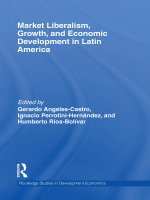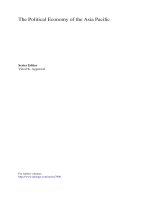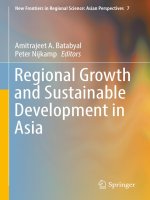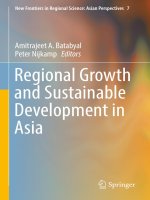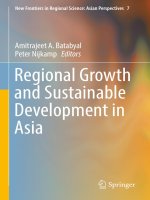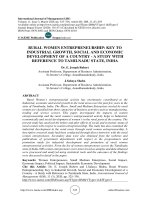Economic growth and economic development 162
Bạn đang xem bản rút gọn của tài liệu. Xem và tải ngay bản đầy đủ của tài liệu tại đây (63.17 KB, 1 trang )
Introduction to Modern Economic Growth
other trading restrictions. There is very well-documented home bias in consumption violating the identical homothetic preferences assumption. Finally, most trade
economists believe that conditional factor price equalization is not a good description of factor price differences across countries. In view of all of these, the results
from the Trefler exercise have to be interpreted with caution. Nevertheless, this approach is important in showing how different data and additional theory can be used
to estimate cross-country technology differences and in providing a cross-validation
for the calibration and estimation results discussed previously.
3.7. Taking Stock
What have we learned? The major point of this chapter has not been the development of new theory. Although we have extended the basic model of the previous
chapter in a number of directions, if our interest were purely theoretical, we could
have skipped the material in this chapter without much loss. Our major objective
in this chapter has been to see whether we could use the Solow model to have a
more informed interpretation of cross-country differences and also use data in order
to understand the strengths and shortcomings of the Solow growth model.
At the end of this brief journey, the message is somewhat mixed. On the positive
side, despite its simplicity, the Solow model has enough substance that we can take
it to data in various different forms, including TFP accounting, regression analysis
and calibration. Moreover, each of these different methods gives us some idea about
sources of economic growth over time and of income differences across countries.
On the negative side, however, no single approach is entirely convincing. Each
relies on a range of stringent auxiliary assumptions. Consequently, no firm conclusions can be drawn. The simplest applications of the Solow accounting framework
suggest that technology is the main source of economic growth over time. However, this conclusion is disputed by those who point out that sufficient adjustments
to the quality of physical and human capital substantially reduce or perhaps even
totally eliminate residual TFP growth. The same debate is seen in the context of
cross-country income differences; while some believe that accounting for differences
in physical and human capital across countries leaves little need for technology
148
